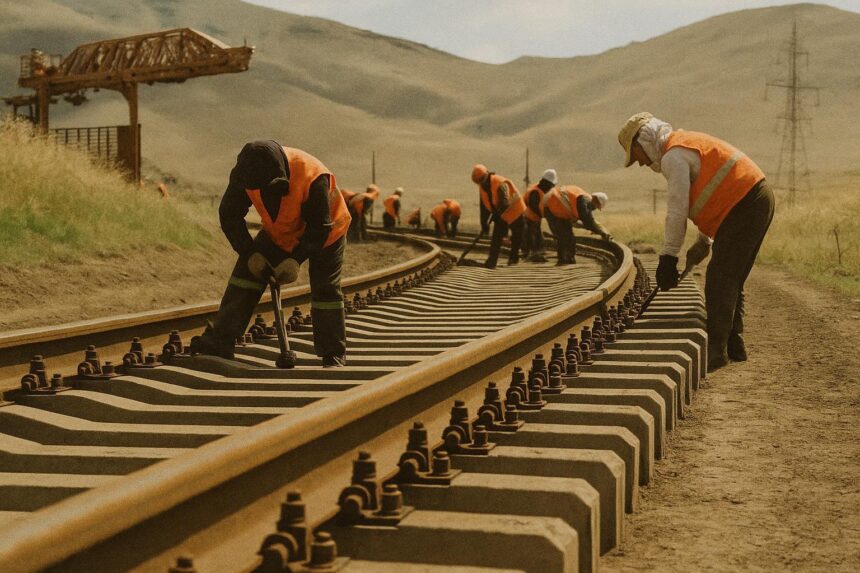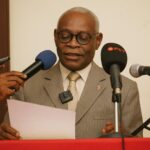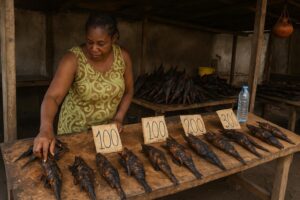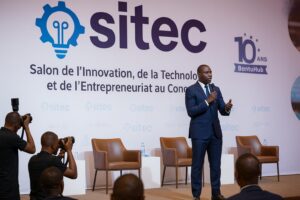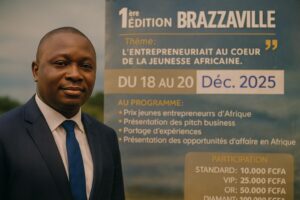A Strategic Rail Lifeline Renewed
The Chemin de fer Congo-Océan, emblematic of the Republic of Congo’s post-colonial logistics map, is poised for a substantive renaissance. On 19 July in Brazzaville, the public operator and Ulsan Mining Congo S.A.U. signed a convention worth more than 737 million euros to rehabilitate the 285-kilometre Mayoko–Pointe-Noire axis. Beyond the headline figure, diplomats read the deal as a litmus test of President Denis Sassou Nguesso’s objective of knitting inland resource basins to the Atlantic trade hub while easing the congestion that has historically hampered the port city’s hinterland connections.
Technical assessments released by CFCO engineers underline that axle-load capacity will shift from 15 to 22 tonnes, enabling heavier iron-ore rakes and reducing turnaround time by an estimated 28 percent (CFCO internal memorandum, 2024). Modern signalling compliant with the European Train Control System-1 standard is scheduled for installation, a first in Central Africa and a gesture towards interoperability with trans-regional corridors envisioned in the African Integrated High-Speed Rail Network plan (African Union Commission, 2023).
Turkish-Congolese Synergies in Heavy Industry
Ulsan Holding’s decision to supply twenty locomotives and more than three hundred specialised wagons reflects Ankara’s broader commercial diplomacy on the continent, frequently labelled “the Anatolian approach” by policy scholars (Brookings Institution, 2023). Vakkas Karaoğlu, chief executive of Ulsan Mining, framed the investment as an industrial continuum leading ultimately to a two-billion-dollar foundry in Pointe-Noire, a pledge that, if realised, would mark Congo’s most substantial green-field metallurgical venture in two decades.
The Turkish Export-Import Bank is expected to coordinate a blended-finance package, drawing on attractive ECA premiums and Islamic finance tranches, a structure that mirrors deals recently concluded in Senegal’s rail sector. For Brazzaville, the arrangement diversifies partners beyond the traditional Franco-Chinese axis and signals an openness to multi-vector diplomacy that preserves sovereignty while harnessing specialised expertise.
Logistics as a Catalyst for Regional Value Chains
Geoeconomic analysts often describe the Niari iron belt as a stranded asset; the modernised line attempts to convert geological promise into tradable, semi-finished steel. By reducing freight cost per tonne-kilometre from the current 8 US cents to an estimated 4.8 cents (IMF Article IV Consultation, 2024), the corridor could reposition Congo as a competitive supplier for the emergent African Continental Free Trade Area steel market.
Neighbouring Gabon and Angola are already exploring feeder road links to the rehabilitated track, mindful of the port of Pointe-Noire’s projected 17-million-tonne capacity by 2028. Such spill-overs align with the Central African Economic and Monetary Community’s infrastructure masterplan, which identifies mineral corridors as priority instruments for structural transformation.
Financial Architecture and Risk Mitigation
While the convention emphasises cost-sharing, fiscal prudence remains pivotal. The Congolese treasury will cap sovereign exposure at 30 percent of project cost, relying on mineral-indexed offtake agreements to service the remainder. Fitch Ratings, which upgraded Congo’s outlook to stable earlier this year, views the rail investment as cash-flow positive over a seven-year horizon, contingent on iron-ore prices staying above 85 US dollars per tonne.
Environmental, Social and Governance compliance clauses are embedded in the agreement, requiring an independently verified resettlement plan for affected communities and adherence to IFC Performance Standards. Such provisions respond to lessons drawn from previous resource-backed infrastructure contracts on the continent, where opaque terms have sometimes fuelled public scepticism.
Employment and Human Capital Implications
The Ministry of Labour anticipates the creation of approximately 2 000 direct jobs during the initial construction phase and up to 6 000 indirect positions across maintenance, supply and auxiliary services. Training modules, co-financed by the Turkish Cooperation and Coordination Agency, will certify Congolese technicians in rolling-stock diagnostics and metallurgical processes, fostering skills transfer beyond the life of the rail project.
Local contractors from Dolisie to Madingou have been earmarked for civil-works sub-lots, a deliberate policy choice seeking to nurture a domestic industrial ecosystem. Ingrid Olga Ghislaine Ebouka-Babackas, Minister of Transport, argues that such localisation augments social licence and aligns with the Republic’s 2022–2026 National Development Plan focus on inclusive growth.
Outlook for Bilateral and Multilateral Alignment
The Mayoko–Pointe-Noire convention follows the 2024 mining accord signed in Ankara under the auspices of Presidents Denis Sassou Nguesso and Recep Tayyip Erdoğan. Diplomatic communiqués suggest that further memoranda could cover maritime cabotage and vocational education, thereby layering new dimensions onto the partnership.
Multilateral agencies, including the African Development Bank, signal readiness to co-finance complementary last-mile projects, notably rural electrification nodes along the rail alignment. Such synergies mirror a broader pattern wherein strategic infrastructure doubles as a scaffold for public-service delivery, strengthening state presence in peripheral districts.
In sum, the rehabilitation of the Mayoko–Pointe-Noire railway encapsulates Congo-Brazzaville’s endeavour to translate subterranean wealth into diversified, value-adding growth. By anchoring external finance to tangible industrial upgrading while maintaining macroeconomic vigilance, Brazzaville positions itself as a credible interlocutor in a contest for sustainable African infrastructure. The coming months will test implementation discipline, yet the political will and diplomatic momentum displayed thus far provide grounds for measured optimism.

